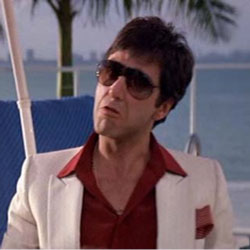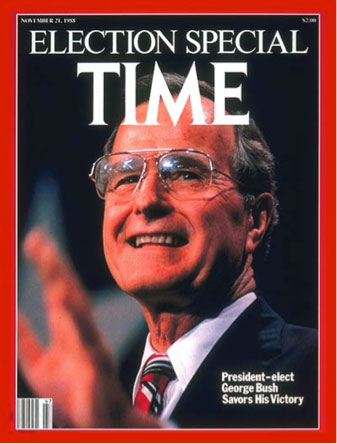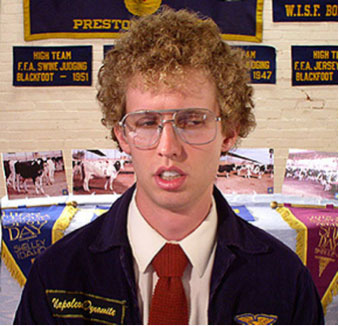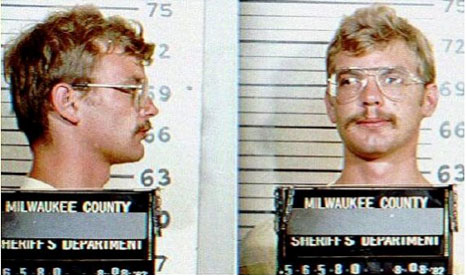 |
No preamble is appropriate to properly address the weird, nebulous space aviators occupy in the world of eyeglass frames. With tinted lenses, they're one of the epitomes of cool, synonymous with movie stars, rap icons, real-and-fictional military heroes, and a nigh-incomprehensible Al Pacino.
When Bausch and Lomb invented the Ray Ban aviator in the 1930's, they were a valuable tool, a way for pilots, sportsmen, and soldiers alike to protect their eyes from the harsh rays of the sun. It wasn't long before the frames' natural je ne sais quoi won over the hearts, minds, wallets, and faces of a nation: Throughout the history of the 20th century, aviators remained a steadfast emblem of cool. Even when the frames began to wane in popularity, all it took was a strategic product placement by Ray Ban in Top Gun to bring the frames back to their roots and revitalize their cool factor.
Make those lenses clear, though, and you've suddenly taken the nose off of Rudolph. Gone is the mystique, the aura of hipness; left in its wake is something... different. Something strange. Something vaguely... sinister. What is it, though? What is it about aviator frames that, more than any other style, give them such a radical dichotomy when sun lenses are inserted?
To grasp the mystique of the aviator frame, we have to go back to the beginning... sort of. The aviator's history as a sunglass frame has already been covered here and elsewhere in the handbook; and, indeed, for most of its first forty-some years of life, that's all the aviator was. Then, a magical, frightening era known as the 70's rolled around. It was a turbulent time for America: The country was still reeling from the dramatic social changes of the 60's and the ongoing Vietnam War, and would soon have to deal with the Watergate scandal, severe economic recession, skyrocketing gas prices, loss of faith in the political system, and trouble in the Middle East (talk about coming full circle, eh)? In a reaction to the chaos of everyday life, the aeshtetics of the era became a little bit chaotic themselves. Almost as if to overcome the struggles going on around them, Americans turned to big things. Big pants with big legs. Big jackets with big lapels. Big turtlenecks with big… turtlenecks. Big patterns. Big hair. Big squash necklaces. Big shoes.
Big glasses.
 |
What of the frame's reputation, though? In media shorthand, the aviator has arguably supplanted zyls and browlines to indicate wearers who're out of touch, nerdy, socially maladjusted, or just plain weird. Think Napoleon Dynamite. Think Office Space. What happened?

|
Moving beyond pervasiveness, the biggest culprit in the frame's downfall is the frame design itself. As I mentioned in another article, most men tend to be flattered by frames that give them a stern, domineering look, usually created by frames that have a straight edge to the top. Although the aviator bar does begin to create this straight edge, the down turned corners of the frame, coupled with the teardrop shape created by the frame's curving inward at the nasal (an effect even squared-off aviators can't escape), create an altogether different look. The downward angles pull the face and the eyes down with them, giving the illusion that most aviator wearers are sad, frowny-faced, or otherwise dealing with some sort of internal personal problem just beginning to bubble ot the surface. The thin, wire design of most aviators also helps to accentuate wrinkles or age lines in the faces of wearers—whom, as we've already covered, tend to be older anyway. (This is one drawback the plastic aviator, a strange creature unto itself, manages to avoid).

|
Jeffrey Dahmer.
The pop culture phenomenon of Silence of the Lambs was still in full swing in the summer of 1991, when the deranged serial killer was arrested in Wisconsin for a flew of crimes that seemed to be ripped straight from the mind of Thomas Harris. Nightly news broadcasts around the country made Dahmer's visage one of the most terrifyingly recognizable in America at the time: The blank stare; the wispy mustache; the unkempt hair; the aviator eyeglasses.
Until his demise at the hands of a fellow inmate three years later, Dahmer became an American television fixture, from criminal proceedings to appearances on Inside Edition; and through haircuts, shaves, and prison makeovers, one thing remained consistent about his appearance: Those aviator eyeglasses. For Generation X, the frames quickly became shorthand for "creepy loner" at best and "homicidal cannibal" at worst, garnering the glasses a new schoolyard sobriquet: Serial killer glasses. The phrase was still in use when I went to college (unadvisedly wearing aviators myself—long story); in fact, a quick Googling of "serial killer glasses" will turn up countless photos of aviator glasses.
And thus we reach the present day, and the current chapter in the long, strange saga of aviator glasses. The frames remain a staple of most dispensaries around the country, for good reason: It's just good business to keep in supply what your patients demand, and gentlemen of a particular demographic continue to demand aviators. Barring some drastic cultural shift, it's unlikely that the traditional aviator will soon adorn the faces of a younger generation; though it's my own personal theory that plastic aviators will. That, though, is a story for another column.












